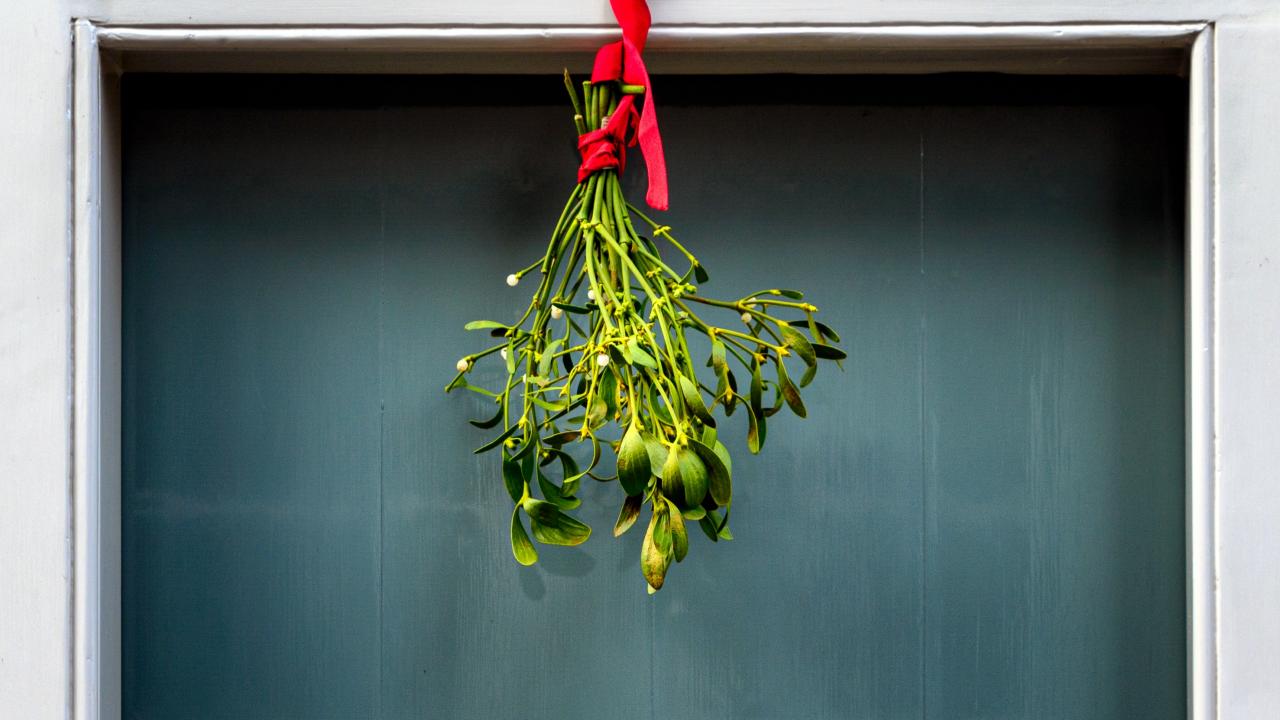
Why we kiss under a parasitic plant, mistletoe!
The following is an excerpt of "Tradition and Lore: A Celebration of Plants at Mid-Winter," written by Mary Burke and originally published in the winter 1995 edition of the UC Davis Arboretum Review.
In ancient cultures throughout the northern hemisphere, the time around the winter solstice has long been a season of celebration, feasting and thanksgiving.
On the far northern reaches of the Roman Empire, people like the Teutons and Celts had their own winter rituals. Julmond was a festival held for twelve days in December when wheat was worshiped, cakes and breads baked, and houses decorated in an effort to gain favor with the field gods. The Celtic Druids worshiped the mistletoe that grew on their sacred tree, the oak. As the oak lost its leaves with the waning of the year, the Druids believed that the spirit of the oak passed into the still green mistletoe for the winter, to return again with the coming of spring. During the festivals of the winter solstice, white-robed Druids would perform a ceremony where a bough of mistletoe would be cut with a golden sickle. The chief Druid would not touch the mistletoe; instead he would cut it and it would fall from the tree into a white cloth. It was offered in prayer to the gods as a symbol of peace and prosperity.
Since ancient times, the mistletoe has been regarded as the plant of peace and friendship. If enemies met under a tree on which mistletoe grew, they would lay down their arms and call a truce for the rest of the day. If friends met under mistletoe, they would consider their friendship blessed with good luck. Pieces of mistletoe were hung above doors as a signal that old quarrels and grievances were forgotten. Kissing under the mistletoe has come from a custom which was once found only in England, but has now spread across the world along with other Christmas customs.
While mistletoe has brought feelings of peace to many, gardeners and arborists may feel the opposite. Mistletoe is actually a parasitic plant and can seriously harm trees. Find out more about the damage mistletoe can cause and how to prevent and treat an infestation on the UC Integrated Pest Management's quick tips page on mistletoe.
